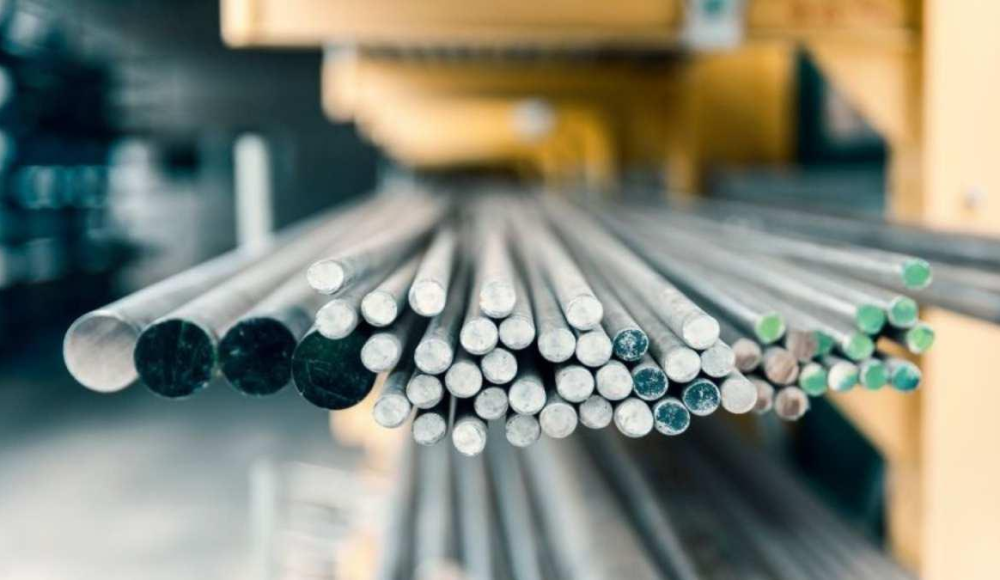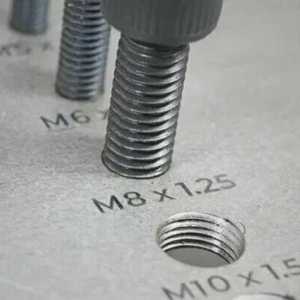Объркани ли сте коя неръждаема стомана да използвате във вашите проекти?? Неръждаемата стомана предлага няколко степени с разлики в свойствата, така че може да е трудно да изберете правилния. Така, купувачът трябва да разбере определени характеристики, така че да изпълни изискванията за ефективност.
Неръждаемата стомана има различни видове; има различни функции и съдържа различни структури. например, 304 неръждаемата стомана е многофункционална и има добра устойчивост на корозия и заваряемост. Докато 316 клас се използва оптимално за морски и химически цели. Продължете да четете, за да научите повече за характеристиките на различните видове неръждаема стомана и техните приложения. Разберете как да направите правилния избор за вашите инженерни нужди и да напреднете в проекта си.
Какво е неръждаема стомана?
Неръждаемата стомана е желязо-хромова сплав, която съдържа минимум 10.5% хром спрямо теглото. Добавянето на хром води до образуването на пасив оксид филм върху стоманената повърхност. Той значително подобрява свойствата си. освен това, добавянето на легиращи елементи като никел и молибден подобрява други характеристики, като сила и издръжливост.
Сплавта от неръждаема стомана е топлоустойчива до 800°C, непорести, лесен за почистване. Изборът на правилния вид неръждаема стомана е от първостепенно значение, въпреки че 304 и 316 степени се използват обикновено в зависимост от средата и употребата на продукта.
Свойства на неръждаемата стомана
Ето таблица, обобщаваща физическите, химически, и механични свойства на неръждаема стомана:
| Тип имот | Имот | Стойност |
| Физически свойства | Плътност | 7.75–8,05 g/cm³ |
| Точка на топене | 1400–1450 °C | |
| Топлопроводимост | 16–25 W/m·K | |
| Електрическо съпротивление | 0.72–0,9 µΩ·m | |
| Модул на еластичност | 190–210 GPa | |
| Химични свойства | Съдържание на Chromium | 10.5% минимум (варира в зависимост от степента) |
| Съдържание на никел | 8–12% (за 304 клас) | |
| Съдържание на молибден | 2–3% (за 316 клас) | |
| Устойчивост на корозия | Пасивиращият слой предпазва от ръжда. | |
| Диапазон на стабилност на pH | 0–14 (варира в зависимост от степента) | |
| Механични свойства | Издръжливост на опън | 500–900 MPa |
| Сила на провлачване | 210–250 MPa (варира в зависимост от степента) | |
| Удължение | 40–50% (зависи от степента) | |
| твърдост | 150–250 HB (Твърдост по Бринел) | |
| Издръжливост на удар | 50–100 Дж (варира в зависимост от температурата) |
Предимства на неръждаемата стомана
Неръждаемата стомана не се корозира лесно поради участието на хром. Помага за образуването на пасивен оксиден филм. Този защитен слой предпазва SS в зони, съдържащи влага, и химически агенти, и като цяло означава способността му да поддържа сила при продължителна употреба.
освен това, неръждаемата стомана е много по-твърда от въглеродната стомана с голяма разлика. Така, може да издържи тежки механични натоварвания и удари, което го прави ценен за приложение в тежката промишленост, гражданско строителство, и аерокосмическо инженерство.
Неръждаемата стомана се обработва лесно. Следователно, може да се монтира в различни съоръжения. Следните функции улесняват почистването, устои на абсорбиране на петна, и остават антибактериални на места като обработка на храни и болници. Освен това, гъвкавостта позволява да се прилага в конструктивни части и декоративни продукти.
Обикновено е неръждаема стомана 100% за многократна употреба. Той върви ръка за ръка с плановете за устойчиво развитие и следователно няма отрицателни последици за околната среда. Така, SS е много подходящ както за нискотемпературни, така и за криогенни приложения.
Видове неръждаема стомана
В зависимост от микроструктурата и състава на сплавта, неръждаемата стомана може да бъде разделена на няколко вида. Всяка категория има своите характеристики и е подходяща за използване при конкретни обстоятелства. Ето подробна разбивка:
1. Аустенитна неръждаема стомана
оценки: 304, 316, 321, 310
Характеристики:
Материалът също има лицево-центриран куб (FCC) кристална структура, което обяснява защо е силно пластичен и здрав.
- Устойчивост на корозия: Добра устойчивост на корозия; особено в кисела и хлоридна среда. Така Степен 316 често се използва в морски приложения.
- Способност за формоване и заваряване: SS изглежда е гъвкав и може да се свързва чрез сложни процедури като заваряване, което прави процесите на оформяне и свързване по-лесни. Той е най-подходящ за приложения, където има голяма деформация.
Приложения:
Използва се в съдовете, кухненско оборудване, оборудване за обработка на храни, съдове, и контейнери за съхранение на химикали, и медицински инструменти.
2. Феритна неръждаема стомана
оценки: 430, 446, 409
Характеристики:
Микроструктурата включва феритно-перлитна и обемно-центрирана кубична (BCC) решетка. Тези степени също показват магнитни характеристики и ниска пластичност.
- Устойчивост на корозия: Издържа на корозионно напукване под напрежение до умерено ниво и затова се препоръчва за умерена среда.
- Ефективност на разходите: Предимството е, че има по-малко съдържание на никел от аустенитните класове, и следователно е по-икономичен.
Приложения:
Някои общи употреби включват автомобилни изпускателни системи, Битова техника, и архитектурни структури поради финото им покритие.
3. Мартензитна неръждаема стомана
оценки: 410, 420, 440° С
Характеристики:
Микроструктурата като цяло остава мартензитна поради високото съдържание на въглерод. Това дава възможност за термична обработка за втвърдяване на материала.
- Сила и твърдост: Този материал се характеризира с висока якост и добра устойчивост на износване, по този начин оптимален за индустрии, които изискват режещи инструменти и приложения с високо износване.
- Устойчивост на корозия: Малко по-податливи на корозия от аустенитните видове. Тяхната повърхност обикновено е покрита със специален слой за увеличаване на защитния ефект срещу ръжда.
Приложения:
Широко използван в ножовете, ножица, хирургически инструменти, и голямо разнообразие от продукти, изискващи острота и висока твърдост.
4. Дуплекс от неръждаема стомана
оценки: 2205, 2507
Характеристики:
Микроструктурата е съставена както от аустенитна, така и от феритна фаза, за да придаде умерена якост.
- Висока якост: Произвеждат подобрена граница на провлачване спрямо 300 и 400 серия от неръждаема стомана, което от своя страна, позволява по-тънки структури и по-малко тегло.
- Устойчивост на корозия: Демонстрира отличен имунитет към питинг и корозионно напукване под напрежение при обстоятелства, съдържащи хлорид.
Приложения:
Те се използват обикновено в нефта и газа, химическата обработка, както и морската индустрия.
5. PH неръждаема стомана
оценки: 17-4 PH, 15-5 PH
Характеристики:
Друга микроструктурна обработка е процесът на стареене, при който се утаяват фазите на втвърдяване на сплавта.
- Висока якост и издръжливост: Този материал има по-висока якост на опън и е подходящ за приложения с високо напрежение.
- Адаптивност: Може лесно да се обработва в състояние, обработено с разтвор, и след това може да се укрепи чрез стареене.
Приложения:
Те се използват в авиационни конструкции, инструменти, и в работните клапани.
Приложения на неръждаема стомана
Неръждаемата стомана е много използвана в този свят, тъй като съдържа много полезни свойства. Ето преглед на приложенията му:
Строителство
Строителната индустрия не може да съществува без неръждаема стомана. Те се използват в греди и колони, за да предложат структурна опора. освен това, използването им увеличава дълготрайността на фасадните и покривните конструкции, тъй като материалът е с висока устойчивост на корозия. Производителите на метални крепежни елементи използват главно неръждаема стомана заради тяхната голяма сила на затягане и структурна твърдост.
Космонавтика и отбрана
В космонавтиката, неръждаема стомана е използвана в различни части, открити в самолета. Този материал се използва за изграждане на неща като самолетни конструкции и колесници. По същия начин, неръждаемата стомана също има висока производителност при тежки условия, което я прави подходяща за използване в армията.
Медицински технологии
Неръждаемата стомана все още е основен компонент в медицинската технология. Хирургическите инструменти трябва да бъдат много издръжливи и способни да издържат на стерилизация. Имплантите, произведени от SS, са биосъвместими и достатъчни по отношение на безопасността при спешни случаи.
Храна и кетъринг
Хранително-вкусовата промишленост използва неръждаема стомана по различни начини. Лепилата, произведени от SS, са хранителни и отговарят на високи хигиенни стандарти. Плотовете и мивките в кухненските уреди предпазват храната от опасност за здравето поради трудни за почистване повърхности.
Архитектурно проектиране
По-специално неръждаемата стомана е отличен избор за архитектурен дизайн, защото е не само стилна, но също така служи добре на предназначението си. Помага за увеличаване на стабилността на парапетите, стълби, и мебели, както и придава модерния облик на сградата. Освен това, той е доста антикорозивен, за да го направи уникален за открито.
Оборудване за животновъдство
Неръждаемата стомана също се използва широко в оборудването за животновъдство.
Хранилки от неръждаема стомана и поилки, известни със своята устойчивост на корозия, може да поддържа хигиената на водата в дългосрочен план и да предотврати овлажняването на фуража.
Резюме
Неръждаемата стомана е може би един от най-полезните материали поради своята гъвкавост и използване в почти всеки сектор. Специалните му характеристики го правят подходящ за приложение в строителството, аерокосмическо инженерство, медицински цели, и производството на хранителни продукти.
освен това, в архитектурни приложения, неръждаемата стомана е ценена заради естетическия си външен вид и способността да избягва ръжда. В бъдещето, неръждаемата стомана ще продължи да бъде ключов материал.
Общи ЧЗВ
Q1. Кои са най-ефективните техники за обработка на неръждаема стомана?
Някои от методите, използвани за обработка на неръждаема стомана, включват CNC струговане, фрезоване, пробиване, и смилане. Използването на твърдосплавни инструменти подобрява ефективността при работа с неръждаема стомана. Допълнително, прилагането на охлаждаща течност по време на процеса на обработка намалява топлината и удължава живота на инструментите за обработка.
Q2. Как се заварява неръждаема стомана?
TIG (Волфрамов инертен газ) и АЗ (Метален инертен газ) са два метода, използвани за заваряване на неръждаема стомана. В по-дебели участъци, предварителното загряване може да помогне за предотвратяване на образуването на пукнатини. Обработки след заваряване, като пасивация, спомагат за подобряване на устойчивостта на корозия на заварени метали.
Q3. Какви методи на рязане са най-ефективни за неръждаема стомана?
Неръждаемата стомана трябва да се реже прецизно, за да се сведе до минимум образуването на грапавини. Това може да се постигне само с финозърнести дискове. Други техники включват плазмени и лазерни техники за рязане. Допълнително, важно е да закрепите правилно материала в скобата за чисто рязане и да предотвратите топлинна деформация.




10 мисли за "Степени на свойствата на неръждаемата стомана & Приложения”